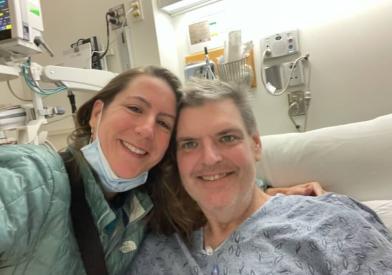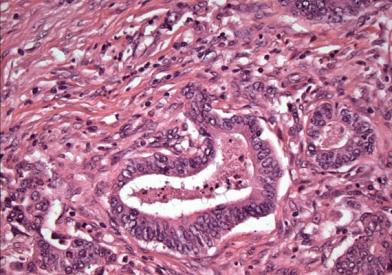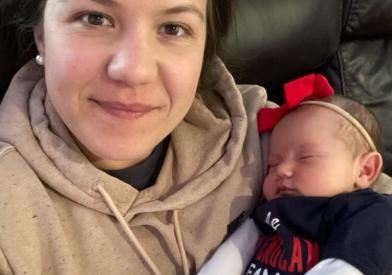Incidence
- Together, colon and rectal cancer are the fourth most common type of cancers in the United States.
- Colon cancer is mainly a disease of developed countries with a Western culture.
- The disease is most often diagnosed in people 50 and older. However, it can affect those younger and appears to be increasing among younger people, though the reason for this is not known.
- Colon cancer affects men and women about equally.
Risk Factors
Anything that increases your chance of getting a disease is called a risk factor. Having a risk factor does not mean that you will get cancer; not having risk factors does not mean that you will not get cancer. Risk factors for colon cancer include:
- Increasing age: Most people who develop colon cancer are 50 or older.
- A family history of cancer of the colon or rectum.
- Certain hereditary conditions, such as familial adenomatous polyposis, and hereditary nonpolyposis colon cancer, called Lynch syndrome.
- A history of inflammatory bowel disease (IBD), such as ulcerative colitis and Crohn's disease
- A personal history of cancer of the colon, rectum, ovary, endometrium, or breast.
- A personal or family history of adenomas (polyps) in the colon or rectum. These growths can be pre-cancerous. Most adenomas will not turn into cancer. However, regular screening to remove them reduces the risk of developing colon cancer.
- Environmental and lifestyle-related factors, such as lack of exercise, obesity, smoking, and alcohol consumption.
- Our team works on research with the Harvard T.H. Chan School of Public Health and has published many landmark papers on diet, lifestyle, and the risk of colon cancer.
- A diet high in red and processed meat.
- Low vitamin D levels.
According to research conducted at Dana-Farber Brigham Cancer Center, 70 to 80 percent of colon cancer cases may be prevented through exercise, weight control, limiting alcohol consumption, and taking aspirin and vitamin D.
People with a family history of colon cancer and/or other cancers in several close relatives across generations – especially if these cancers occur at a young age – may benefit from genetic counseling and testing.
Learn more about the importance of exercise and good nutrition in cancer prevention for cancer patients and survivors.
Learn more about having a family history of cancer and genetic risk factors through our Center for Cancer Genetics and Prevention.
Symptoms and Signs
Potential symptoms and signs of colon cancer include:
- A change in bowel habits.
- Blood (either bright red or very dark) in the stool.
- Diarrhea, constipation, or feeling that the bowel does not empty all the way.
- Stools that are narrower than usual.
- Frequent gas pains, bloating, fullness, or cramps.
- Weight loss for no known reason.
- Feeling very tired.
- Vomiting.
- Anemia (low red blood cell count).
It is important to know that these symptoms and signs can have many causes, and may not be due to cancer. However, it is important that you discuss these symptoms or signs with your doctor.
Further, many people, particularly those with polyps or early stages of colon cancer, may not have any symptoms or show any signs, making it difficult to detect without regular screening. Several screening methods make it possible to find some cancers before symptoms appear.
Screening and Prevention
Screening for colon cancer helps prevent the disease and decrease the number of deaths from it. Some tests to find polyps can actually prevent the development of cancer because doctors can remove the growths before they become problems.
There are several ways to screen for colon cancer. Each type of test has advantages and disadvantages, due to risks from the test and the sensitivity/accuracy of the test. You should talk to your doctor about when to begin screening for colon cancer, what test to have, the benefits and drawbacks of each test, how often to undergo screening, and when to stop screening.
Options for screening include:
- Fecal occult blood testing: A test to check stool (solid waste) for blood that can be seen only with a microscope. Small samples of stool are placed on special cards and returned to the doctor or laboratory for testing.
- Sigmoidoscopy: A procedure to look inside the rectum and sigmoid (lower) colon for polyps (small areas of bulging tissue), other abnormal areas, or cancer. A sigmoidoscope is inserted through the rectum into the sigmoid colon. A sigmoidoscope is a thin, tube-like instrument with a light and a lens for viewing. It also has a tool to remove polyps or tissue samples, which are checked under a microscope for signs of cancer.
- Colonoscopy: A procedure to look inside the rectum and entire colon for polyps, abnormal areas, or cancer. A colonoscope is inserted through the rectum into the colon. A colonoscope is a thin, tube-like instrument with a light and a lens for viewing. It will also have a tool to remove polyps or tissue samples, which are checked under a microscope for signs of cancer.
- Virtual colonoscopy: A procedure that uses a series of x-rays called computed tomography (CT) to make a series of pictures of the colon. A computer puts the pictures together to create detailed images that may show polyps and anything else that seems unusual on the inside surface of the colon. This test is also called colonography, or CT colonography.
- DNA test: A test of the stool for small pieces of DNA that come from cells lining the colon and rectum. It looks for abnormal DNA that may be due to a cancer.
- Double-contrast barium enema: A series of x-rays of the lower gastrointestinal tract. A liquid that contains barium (a silver-white metallic compound) is put into the rectum. The barium coats the lower gastrointestinal tract and x-rays are taken. This procedure is also called a lower GI series. It is rarely used anymore.
The National Cancer Institute website describes these tests in more detail.
Our team of experts works together to provide compassionate, comprehensive, and highly coordinated care for patients with colon cancer. Our specialists at the Colon and Rectal Cancer Center at Dana-Farber Brigham Cancer Center are world leaders in the field who create personalized treatment strategies based on extensive experience, as well as laboratory translational research.
We offer our patients targeted therapies, clinical trials, advanced surgical procedures, and the full range of nutritional and other support services, from a top-ranked hospital and leading cancer research center.
We provide comprehensive services to patients with these cancers, including:
- Personalized treatment plans: every patient treated as an individual with unique needs
- Clinical trials available based on your genetic profile
- Innovative surgical techniques including laparoscopic robotic surgeries
- Our unique Enhanced Recovery After Surgery program
- The new Young-Onset Colorectal Cancer Center – one of the first centers in the country dedicated to treating colon and rectal cancer patients under age 50
- Multidisciplinary care delivered by specialists from Dana-Farber Cancer Institute and Brigham and Women’s Hospital









